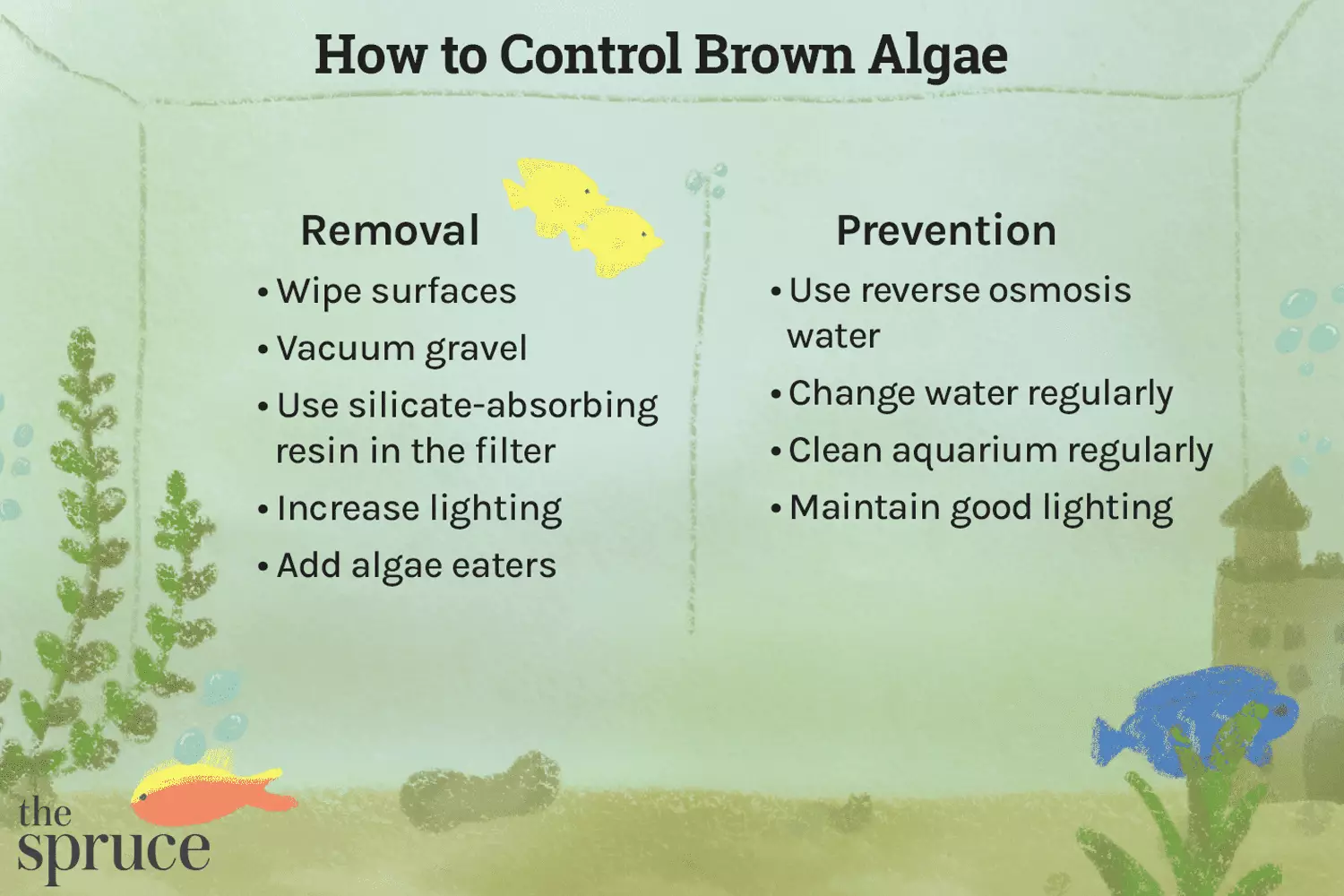Creating and maintaining an aquarium can be a rewarding hobby, yet new fishkeepers often encounter common challenges, one of the most notable being the presence of brown algae, often known as Silica Algae. This article aims to shed light on the nature of this algae, its causes, and the easiest ways to manage it, ensuring a vibrant and healthy aquatic environment for both the fish and plants.
Brown algae, scientifically referred to as diatoms, belong to the class Bacillariophyceae. These unicellular organisms proliferate in aquariums, typically appearing as a brownish film covering tank surfaces such as glass, gravel, and decorations. While they can contribute to the ecological balance of aquatic environments, their rapid growth can be disconcerting for beginners who may view them as a sign of poor tank conditions. In reality, brown algae are relatively harmless to fish but can create an unattractive environment if left unchecked.
Diatoms thrive in environments where silica and nutrients like nitrates are abundant. New aquariums often face brown algae outbreaks due to insufficient competition from other algae types and plants that could otherwise limit their growth. Tanks that are poorly lit tend to foster brown algae growth since the low light inhibits the proliferation of green plants and algae, which typically consume the nutrients required by diatoms.
Additionally, the water chemistry plays a crucial role in brown algae development. High levels of silicic acid from tap water—common in many municipal water supplies—can lead to an accumulation of silica. Substrates like silica sand might also leach silica into the water. This creates an ideal setting for brown algae to flourish. Other influences include overfeeding and an excess of organic matter in the tank, which can raise nitrate levels and provide additional nourishment for the algae.
Aquarium owners can often recognize brown algae by their dark brown-to-tan coloration and matte finish. This growth does not stick together like blue-green algae but instead forms thin layers that can float freely or settle at the bottom. Although they may not pose a direct threat to the fish, their presence indicates an imbalance in tank conditions, often requiring your immediate attention to prevent further growth.
An initial step in tackling brown algae is to assess water parameters. Testing for silica and nitrate concentrations can help. High readings may indicate the necessity for corrective actions such as changing water sources or adjusting feeding practices.
The removal of brown algae is relatively straightforward. Unlike other algae types whose removal can be labor-intensive, brown algae can be wiped away easily from surfaces. Regular cleaning should focus on all areas of the aquarium, including decorations and the glass itself. Siphoning the gravel during water changes is crucial because some algae particles can settle and become rooted into the substrate.
In terms of prevention, consider incorporating more lighting to your tank, ensuring plants receive at least eight hours of light a day. Alternatively, introducing live plants can create competition for nutrients, naturally reducing the ability of brown algae to dominate.
Adding specific fish species can also help manage brown algae. In freshwater aquariums, fish such as plecostomus or otocinclus catfish are known to feed on this algae, keeping it under control. For those with saltwater setups, there are numerous invertebrates and fish species that will consume diatoms effectively.
One of the cornerstones of preventing brown algae growth lies in impeccable water quality. Regular water changes are essential to maintain balanced nitrate levels and to limit the buildup of nutrients that can lead to algae blooms. Utilizing reverse osmosis water for topping up or creating freshwater tanks can help reduce unwanted minerals and contaminants that contribute to algae growth.
Moreover, be mindful of feeding habits. Excess food decaying in the tank is detrimental, leading to heightened nitrate levels. Keeping feeding to the amounts that fish can consume in a few minutes ensures waste remains minimal.
While brown algae can be frustrating for fishkeepers, understanding its nature and causes provides a pathway to effectively manage and prevent its growth. The combination of regular maintenance, optimal lighting, competitive plant growth, and the introduction of algae-eating species creates a harmonious environment where your aquarium can thrive. By adhering to these practices, you’ll create a healthy habitat for your aquatic life and keep unsightly brown algae at bay.

